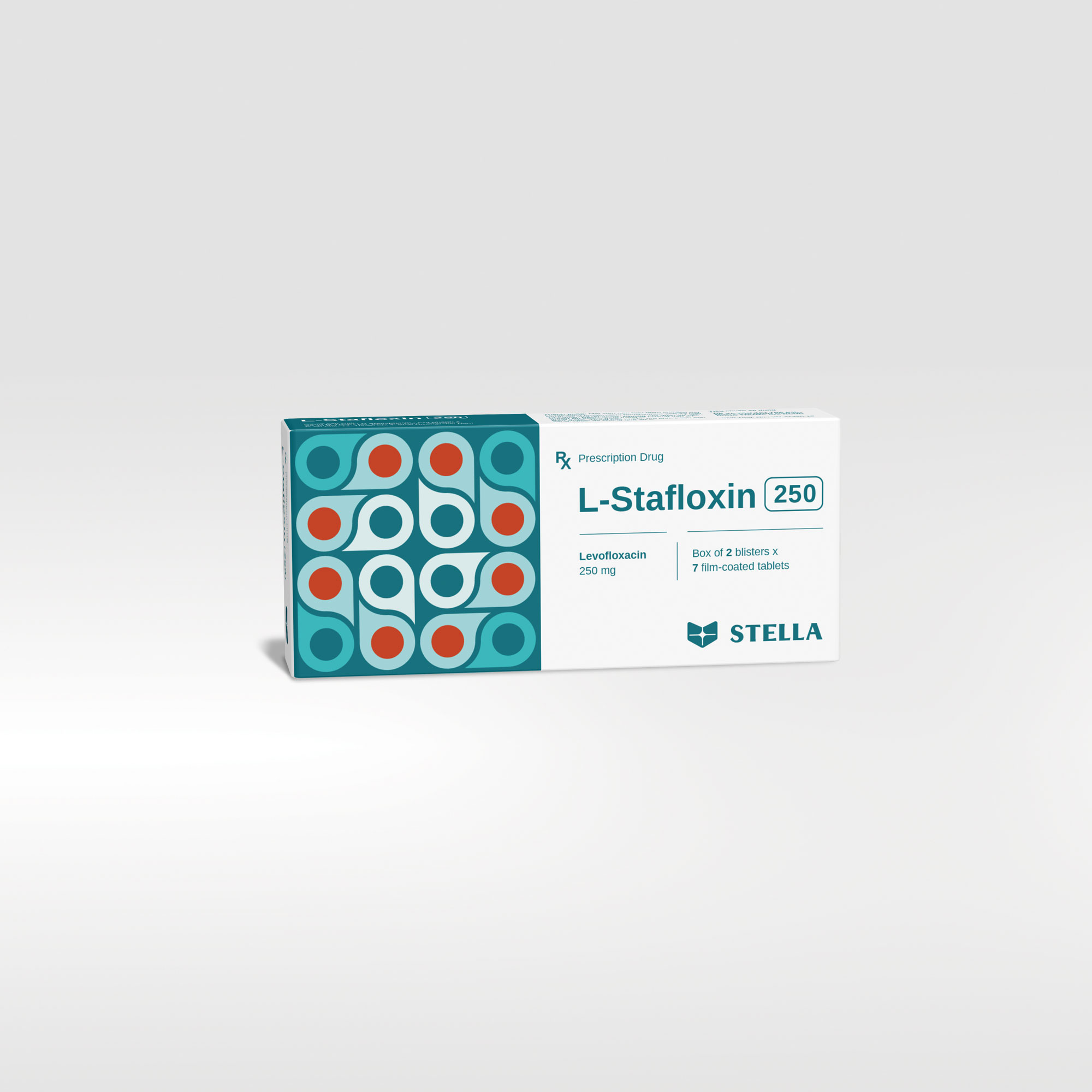- Complicated and uncomplicated skin and soft tissue infections.
- Pyelonephritis.
- Complicated and uncomplicated urinary tract infections pyelonephritis.
- Chronic bacterial prostatitis.
- Community-acquired pneumonia.
- Acute bacterial exacerbations of chronic bronchitis.
- Acute bacterial sinusitis.
Dosage:
L-Stafloxin 250 is used once or twice daily.
- Complicated skin and soft tissue infections: 500 mg once or twice daily, 7 – 14 days; uncomplicated: 500 mg once daily, 7 – 10 days.
- Inhalation anthrax: Post-exposure prophylaxis for Bacillus anthracis: 500 mg once daily, 8 weeks; Treatment: After intravenous therapy when the patients status allows, taking 500 mg once daily, 8 days.
- Community-acquired pneumonia: 500 mg once or twice daily, 7 – 14 days.
- Acute bacterial exacerbations of chronic bronchitis: 500 mg once daily, 7 – 10 days.
- Acute bacterial sinusitis: 500 mg once daily, 10 – 14 days.
- Pyelonephritis: 500 mg once daily, 7 – 10 days.
- Chronic bacterial prostatitis: 500 mg once daily, 28 days.
- Complicated urinary tract infections pyelonephritis: 500 mg once daily, 7 – 14 days; Uncomplicated: 250 mg once daily, 3 days.
- Complicated cystitis: 250 mg once daily, 3 days.
Patients with impaired renal function:
- Clcr = 20 – 49 ml/min: start with normal dosage, maintenance with a half of the normal amount;
- Clcr = 10 – 19 ml/min: start with normal dosage, maintenance with a quarter of the normal amount. If initial dosage is 250 mg every 24 hours, the maintenance dosage is 125 mg every 48 hours;
- Clcr < 10 (including hemodialysis and continuous peritoneal dialysis):
- Initial with 250 mg every 24 hours, maintenance with 125 mg every 48 hours;
- Initial with 500 mg every 24 hours, maintenance with 125 mg every 24 hours;
- Initial with 500 mg every 12 hours, maintenance with 125 mg every 24 hours.
Usage:
L-Stafloxin 250 is administered orally without regard to meals. It is not recommended to use antacid containing aluminium and magnesium, products containing heavy metals like iron and zinc, sucralfate, didanosine within 2 hours before and after taking levofloxacin.


